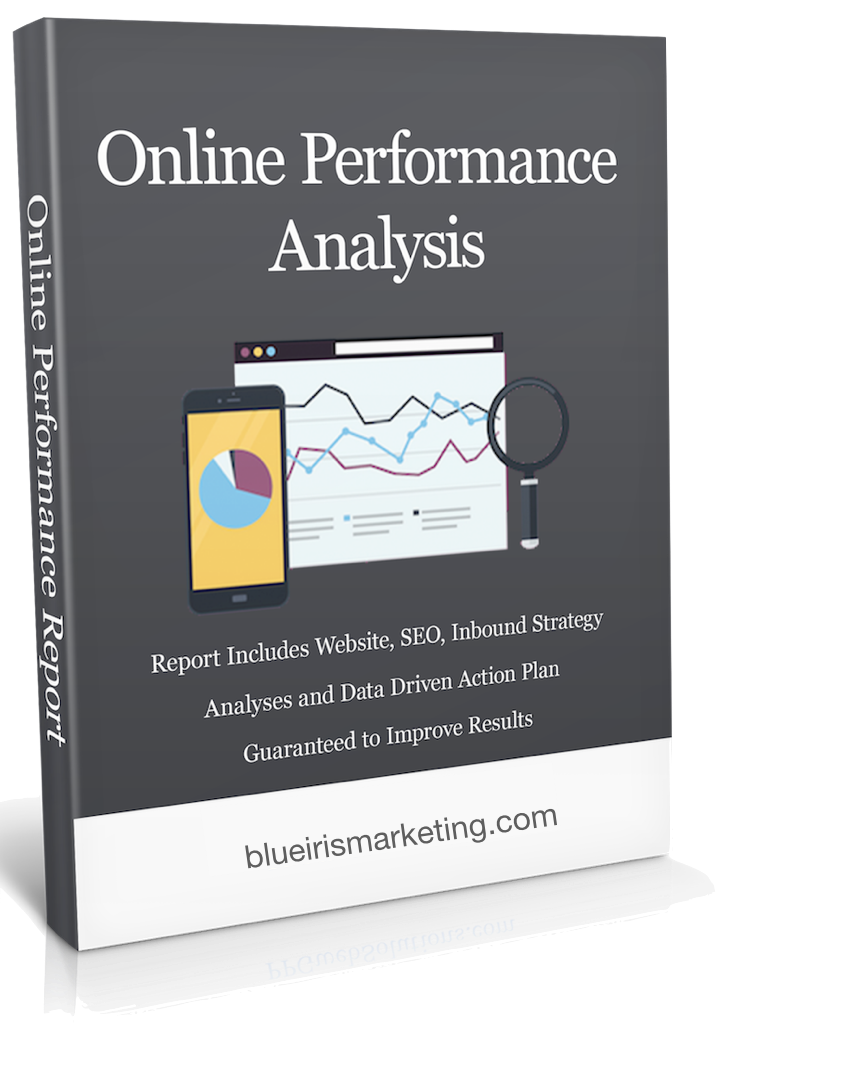How to Avoid A Google Penalty

Why Your Business Needs to Hire an Inbound Consultant
March 10, 2017
The ROI of Inbound Marketing
March 21, 2017I remember my first experiences with Search Engine Optimization. It was the mid-90s, Internet Explorer and Netscape were the leading browsers and AltaVista and Yahoo were absolutely the dominant search engines.
Everything was so much easier back then. Most sites were built with HTML. Layouts were created using HTML tables. Back then, all you had to do to get your site indexed and make sure it would show up in search engines was to submit your website to all existing search engines.
It was so simple back then. From today’s perspective, it’s hard to believe everything was just that easy.
And then things started to get more “complicated”.
More and more sites emerged and the need to stand out from the crowd got bigger. In other words, the need to be ranked as high as possible in search results became the charge. Webmasters (people in charge of site maintenance) began to experiment with their sites in hopes of getting higher rankings.
The Birth of Search Engine Optimization
It is in that moment the first SEO “discoveries” took place. We learned that a good domain name and page URL, combined with Header tags, and especially H1 tags, would yield high search results. This has been part of the magic formula for leading positions in search engine results for a long time.
We quickly witnessed a drop in ranks for sites that used table layouts. Then there was the appearance and popularization of new search engines. Backlinks at the same time began to slowly establish themselves as the important players in the game.
From that moment on, more and more webmasters began shifting their focus to the issue of ranking the websites in search results in leading search engines, thus giving birth to search engine optimization.
As I’m writing this post today, it almost feels like all this took place so long ago. If feels similar to when man invented the wheel or electricity. Actually, this happened only 15-20 years ago.
The online world progresses in leaps and bounds. What is permitted today, will get you penalized tomorrow.
 Protecting Your Client from Google Penalties & Losses into the Future
Protecting Your Client from Google Penalties & Losses into the Future
The online world has morphed repeatedly in the past 10 – 15 years. The technology that has emerged out of our online capabilities in less than 20 years has completely changed the way we live and even our daily habits.
You can see how a company with long-term growth strategies needs to be sure that the online performance tactics they use today don’t come back to bite them in the future.
It takes years for companies to experience desirable returns on their initial investments. Growth companies – those whose strategy drives growth in a scalable, predictable way – make investments that can decades to begin reaping returns.
What is the best way to approach search engine optimization on behalf of these companies?
I would venture to say that most SEO specialists do not think about how the work they do today could affect their clients’ search engine performance and success in 5 or more years.
Best Practice Should Include Future-proof Planning
It’s of the utmost importance to be as strategic as possible and insuring that today’s search optimization strategies won’t result in future search-engine-issued penalties, erasing the client from the index and search engine results.
Some of the best practice methods SEO’s have used in the last couple of years in search engine optimization plans included:
- Adding backlinks to site footers
- Exchanging backlinks with other sites
- Making hundreds and thousands of small fictitious sites on the same shared hosting, which had backlinks to our client’s site
- Using backlinks rings methods
- Leveraging various backlinks networks
- Creating thousands of backlinks to forums or comments on different sites and blogs
- Buying likes on Facebook to try and increase the talk about rate…
Most of these methods were, in their own time, perceived as white-hat SEO methods. They all yielded excellent results.
We could almost say each of these methods was key to rankings results. They all have one thing in common – not one of them produces results today!
Not only do they no longer work, but some of them may result in Google penalties. Quite frankly, if you had them in use today, you would be getting penalized by Google.
Even when things were simpler, search engine experts weren’t able to predict with certainty the future impact of our day-to-day best practice strategies.
With complications like these, how can we predict the future of SEO optimization?
How can we guarantee our clients won’t be penalized by the White Hat methods we use today?
The answer is quite simple… and disappointing.
We cannot!
You will find millions of articles on the Internet written by different experts telling you:
- What kind of backlink portfolio you should have
- Which relations between keywords or anchor words you need
- What loading speeds are acceptable
- How many words the posts published on your site should have, and
- With what frequency you should post
And most of these things really do work… for now.
The big question is – will it work tomorrow?
Will Google come up with algorithm updates (Google averages more than 600 updates per year) that cause your client’s hard won search engine rankings to fall overnight to a third or fourth page ranking?
How will you explain it to them?
What will you say to the company that has invested thousands of dollars to you in the last ten years. There was one clear goal in mind – having the best possible positions in search results. Then, all of a sudden, overnight, they’re ranking positions are as if they never used search engine optimization.
 How We Protect Our SEO Clients
How We Protect Our SEO Clients
Because of all of this, Blue Iris Marketing’s approach is slightly different. Being aware of the fact that search engine optimization is fragile and prone to drastic shifts and changes (sometimes on a daily basis), we’ve tried our best to develop high-performance proprietary methods that provide our clients with constant growth in search results – and security into the future.
We are able to outperform our competition nearly every time – even in the first 90 to 120 days. In some unique circumstances, growth can occur a bit slower than with some other less future-proof methods. What matters – in every case – is that growth is constant.
We are proud (and very, very happy) to say that not one of our clients has ever suffered negative consequences after a Google update.
In fact, following each Google update, the ranks of our clients improved.
You might be asking yourself, “What is the secret behind their success?” This might sound a little corny, but we aren’t ashamed to say that we don’t put the search engines first, we put our client first.
We care about you and the company you lead.
The Foundation of our Strategy
It all starts with the Buyer Persona.
Once our client’s target personas are clearly defined, each subsequent activity is driven by one objective – making it simple and natural for each targeted persona to find and successfully navigate the client website so that they find what they need, when they need it.
You won’t blame us for not sharing all the ingredients to our secret sauce. However, we will share some popular areas of search optimization and what we think about them.
Content marketing
In the last couple of years, this has been the primary area of focus and the one around which most theories have been developed. Various experts continue to attempt to define the:
- Minimum number of words an article should have
- Keyword density
- Structure of headers
- Alt img tags
- And lots more
And, guess what, we hardly pay attention to any of those variables.
When it comes to content marketing, our goal is to offer site visitors:
- High-quality article that will provide the answer and solutions visitors are looking for at each phase of their buying journey
- Text length depends entirely on the topic.
We never write unnecessarily long texts, nobody has time; especially to read endlessly long posts. The fact is, SEO experts advocate for longer articles, but what is much more important is the fact that Internet users tend to prefer shorter content, whether it is texts or videos.
The best example that supports this case is Twitter, Vine, Instagram Live, and Snapchat. People want to reach the information they need easily and quickly and then go on with their lives.
If your buyer persona wants to know if it is going to rain tomorrow, we will provide the answer – short, quick, simple. We’re not going to write 2500+ words where we’ll go into details about various types of clouds, movements of air currents, blah, blah, blah… with carefully selected subheadings.
Sure, maybe that article will initially rank higher, but visitors won’t be interested in returning to the site; which in the long run will produce a huge bounce rate, poor “time on page,” and more ranking signals that do more to harm your position than help it.
Headers
Yes. We are aware of the importance of H2 tags, and we use them… not because of optimization, rather to visually divide segments of an article. This makes it easier for visitors to find the content they are particularly interested in.
Simply put, some topics need the article to be longer and more detailed, but not each and every visitor is interested in the entire piece. Most are interested in specific parts of the content, and we want to make that search as easy as possible.
Photos
Nearly everyone understands that most people use mobile devices to surf the web. It is really important to keep in mind the size of the average phone screen and the fact that cellular data is paid for according to the data transfer size. Therefore, we do not want to unnecessarily slow down the site or a specific post with a bunch of photos. They are there to help readers understand the text better, not to fulfill some imaginary alt img tags quota.
SEO Analysis Tools
Try not to use various automatic tools and services to check your website’s SEO. Each website is unique and as such requires manual analysis.
We provide the following free online analysis. We conduct every element of the process manually. An actual human does the research, analyzes the results and compiles recommendations based on the unique nature of your business.
- SEO Report Card and Website Performance
- Online Brand Performance Analysis
- And you can get the mac daddy Comprehensive SEO and Online Performance Analysis
Most of online, free apps are made with the goal to sell you the “premium” version of the app, or some SEO software that will make miracles for you as soon as you start using it. But, these miracles somehow never seem to happen… Don’t be naïve, and don’t throw your hard-earned money on these mechanized apps and promotional sales articles.
If you’re still not convinced, or see us as hyping up the possibilities, let us give you an example.
Try searching for the keyword “click here” on Google and take a look at the results. Almost none of these sites are optimized for this specific keyword, and the sites that appear on the first page are diverse and deal with all sorts of topics.
So, how is that possible? If you take any of these sites and try to analyze them in any of the apps we’ve mentioned above, the app will show poor results and suggest you correct numerous items to optimize the website for this keyword. Yet, the site is somehow shown on the first page of search results.
How can that be?
Well, to get the answer you will need to conduce a manual analysis.
Backlinks
Without backlinks, you cannot expect good page ranks, especially not in the long term.
It is because of their enormous importance that SEO experts pay close attention to this area, and accordingly, the lion’s share of SEO strategies are about obtaining backlinks. Still, we should be realistic and say that most of these methods are part of Black-Hat SEO.
The results acquired with Black Hat SEO are always put to the test – maybe not today – but be sure, the day is coming. The consequences are severe and costly, without question.
This brings us to the million-dollar question – how to get high-quality backlinks that won’t set us up for a penalty. We’ve figured it out and it is part of our proprietary White Hat SEO magic. It’s what keeps our clients ranking at the top and staying at the top.
If you are a business owner or leader, you must understand that under no circumstances does Google or any other search engine care whether you know what your SEO expert is doing on your behalf. If they are using Black Hat practices, you’re going to lose your rankings, your domain authority, brand integrity and more… big time.
It’s going to cost you a lot of money to fix the resulting problems.
There are specific ways to identify if your SEO team is using Black Hat practices. We could write several articles on it. In short, you can use analytic tools to look at your backlinks and anchor phrases. You could ask your SEO to provide a full backlink analysis report.
Log in to your Google Analytics dashboard. Look at the Acquisition > All Traffic > Source Medium > User > Country report. This will tell you what country your website visitors are in.
For example, if your client is a local Indianapolis company, there is no need for you to create profiles in various directories in Australia or China. Black Hat SEO will product volumes of backlinks in areas of the world that have no interest in your solution – and Google knows this.
If you see that a significant portion of your visitors are from parts of the world where you are not marketing or have customers, there’s a flag and you should be asking your SEO expert some questions.
A better approach for a company targeting client in Indianapolis is to focus on opening high-quality profiles in local directories that are actually used by Indianapolis residents. Make it easy for your buyers to find your solution.
No matter what you do, if you want to avoid the threat of practices that make you vulnerable to future search engine penalties and lost search engine rankings, focus on your buyer persona. Focus on delivering the pages and solutions they need, where they will find them, when they are looking for them.
Forget all the different SEO methods suggested by various SEO experts.
Forget the automatic SEO checkers and their recommendation.
Develop an accurate, detailed buyer persona. Use it as the foundation of your SEO plan. With your Buyer Persona leading every action you take, you won’t be buying crappy backlinks that do absolutely nothing for your customer conversion rate.
We recommend running a manual SEO and online performance analysis regularly. It’s the best way to make sure nothing funky is going in with your search engine optimization efforts and results.
You’ll also get a bird’s eye view of search engine ranking opportunities you may be missing and recommendations for areas where improvement can create a measurable value impact.
We’d love the opportunity to provide you with a complimentary manual SEO and Website Performance Analysis.
You’ll find out one of three things. Depending on how you look at it, you’ll be glad to know what you learn.
- You’ll either discover your SEO team is doing a fabulous job – definitely worth the peace of mind.
- You may learn that you’re current SEO strategy is missing opportunities to attract buyers and it’s costing you lost customer opportunity, revenue and profits… definitely want to know about that.
- Your current SEO team has been using tactics that set you up for penalties and consequences now or further down the road. You’ll absolutely want to know about that.
Get Your FREE Website and SEO Analysis Today
Using data-driven analyses and research, we will conduct a thorough performance audit of your:
- Website Performance
- Brand Performance
- Inbound Marketing Strategy
- Search Engine Optimization
- Competition
- Social Signals
- Domain Ranking and Rating
Request A Consultation





